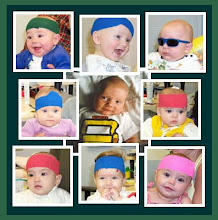



Exposure to tobacco smoke and children’s behaviour
DR WIDODO JUDARWANTO
Working together make a smoke-free homes and smoke-free zones for all children
Yudhasmara Foundation
JL TAMAN BENDUNGAN ASAHAN 5 JAKARTA PUSAT, JAKARTA INDONESIA 10210
PHONE : (021) 70081995 – 5703646
email : cfc2006@hotmail.com, judarwanto@gmail.com
www.savechildfromsmokers.blogspot.com/
A study to be published in the Journal of Developmental and Behavioral Pediatrics examined the possible impact of exposure to secondhand smoke on children’s behaviour. Although most studies of this kind rely on parents’ reports of smoke exposure, researchers in this case measured it using tests that detect cotinine, a byproduct of nicotine, in the bloodstream. Children were recruited from an asthma intervention trial.
Although girls were exposed to more smoke than boys were, only boys showed a significant increase in behaviour problems. These difficulties included externalizing behaviours (e.g., hyperactivity, aggression) and internalizinBoys with asthma who are exposed to higher levels of tobacco smoke at home are more likely to have behavioral problems, new research shows.
“These findings should encourage us to make stronger efforts to prevent childhood exposure to tobacco smoke, especially among higher risk populations, such as children with asthma,” Dr. Kimberly Yolton of the Cincinnati Children’s Hospital Medical Center in Ohio said in a press release accompanying the study.
While the detrimental effects of tobacco smoke exposure on children’s health and cognition are well known, there has been less research into how this exposure might affect behavior, Yolton and her team point out in the Journal of Developmental and Behavioral Pediatrics. The studies that have looked at the issue have used parent reports to gauge children’s exposure, which may not be accurate, they add.
To get a clearer idea of this relationship, the researchers evaluated 220 boys and girls with asthma participating in a trial investigating the effects of air filters on their symptoms, lung function, and health care use. All of the children underwent blood tests to measure their levels of the nicotine byproduct cotinine at the study’s outset, which is considered to be the best way to measure tobacco smoke exposure.
Girls’ cotinine levels indicated that they were breathing more second-hand smoke than boys. While there was no link between cotinine levels and behavior in girls, the researches did find an association with boys.
Specifically, the greater the boys’ exposure, the more likely they were to have externalizing behavior problems such as hyperactivity, aggression and conduct disorders. They were also more likely to have internalizing behaviors, for example symptoms of anxiety and depression.
While past research has linked tobacco smoke exposure to externalizing behavior in children, the researchers note, children with asthma tend to have internalizing behavior problems.
The findings can’t be generalized to children who don’t have asthma, they add, but they do “provide further evidence that even low levels of environmental smoke may contribute to behavior problems in children.”
SPECIAL REFERENCE :
Journal of Developmental & Behavioral Pediatrics.
Yolton, Kimberly, Khoury, Jane; Hornung, Richard, Dietrich, Kim ; Succop, Paul; Lanphear, Bruce
Abstract:
Rationale: Emerging evidence suggests that exposure to environmental tobacco smoke (ETS) may be linked with behavior problems in childhood, but previous research has relied primarily on parent report of exposure, and results are inconclusive.
Objectives: To investigate the relationship between exposure to ETS and child behavior problems among children with asthma.
Methods: The sample included 220 children who were enrolled in an asthma intervention trial and regularly exposed to ETS at home. Serum cotinine was used to measure exposure to tobacco smoke, and behavior problems were assessed by parent report on the Behavior Assessment System for Children. Covariates in adjusted analyses included: sex, age, race, asthma severity, asthma medication, maternal education, prenatal tobacco exposure, maternal depression, and Home Observation for Measurement of the Environment score.
Results: Child behavior problems increased with increasing exposure to ETS. A stratified analysis of boys and girls separately indicated higher exposure among girls, but behavior problems were statistically significantly associated with exposure only in boys. Increasing behavior problems included externalizing behavior problems ([beta] = 2.23, p = .02) such as hyperactivity and aggression, internalizing behavior problems ([beta] = 2.19, p = .01) such as depression, and behavior symptoms ([beta] = 2.55, p = .01).
Conclusions: Among children with asthma, exposure to ETS is related to increased child behavior problems among boys.

















Tidak ada komentar:
Posting Komentar